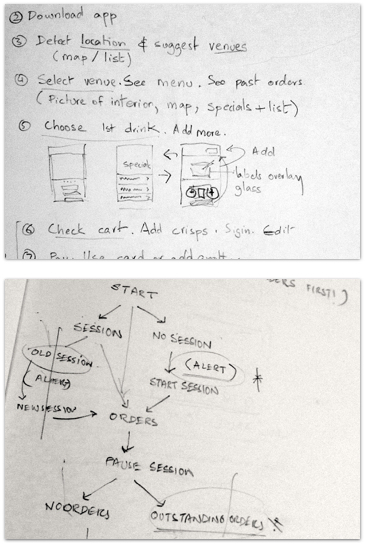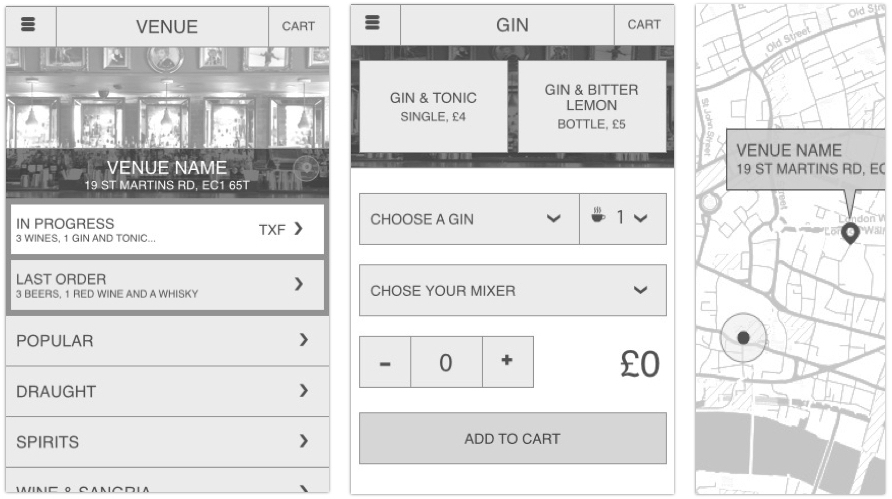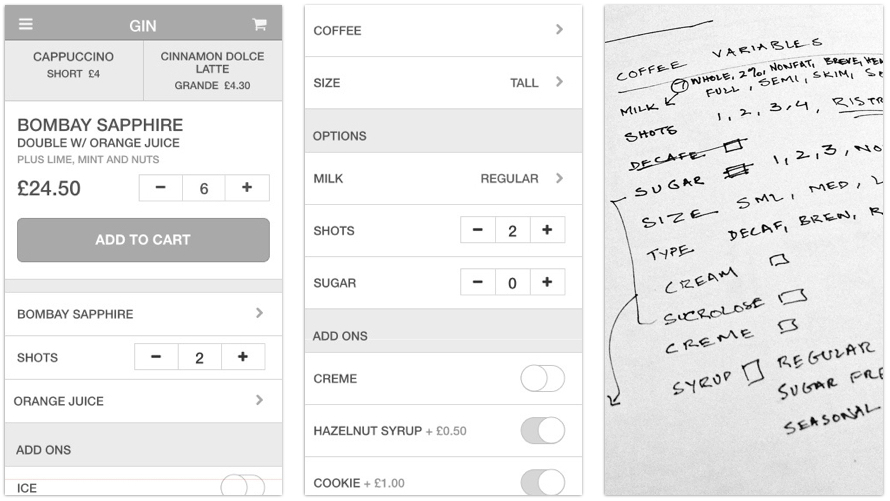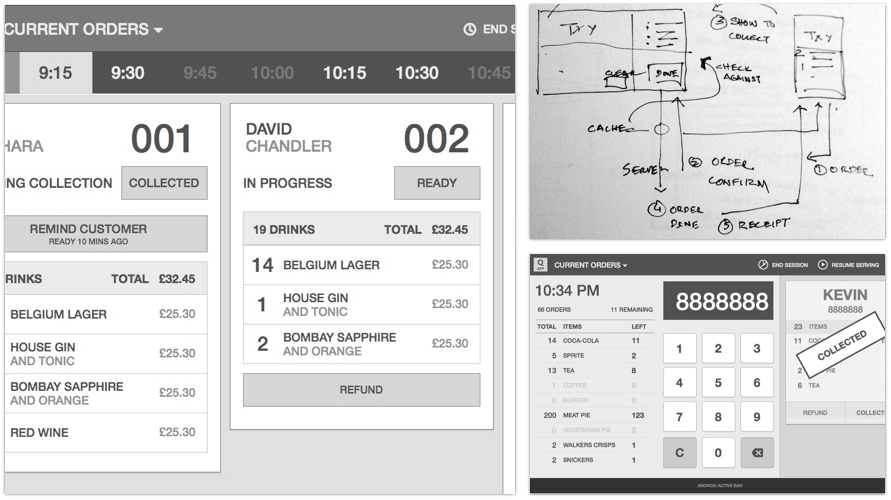Q App was a pioneer mobile ordering platform for hospitality, sports and entertainment venues in the UK. It was launched in 2013 with Nimble Mobile (my employer) as a founding partner.
The original brief was for an ordering platform for bars and cafes. Over time, this expanded to cater to mass venues like theatre, entertainment halls and football stadiums with additional flexibility of menu formats, delivery options and alternative views for staff.
I was responsible for the UX design of the mobile and tablet apps from 2013–2015, I worked on the initial product launch and all subsequent features as the ordering platform expanded to cater to the needs of its diverse selection of partner venues.
My role was to design the iOS and Android apps. The customer-facing mobile apps allowed users to find participating venues, explore their menus and place an order. Meanwhile, a separate Android tablet app would receive and process orders in the kitchen.

Working with the founders, I researched the ordering process at our partner cafes and bars. To release fast, we decided to implement a parallel ordering platform that would sit alongside their existing, proprietary POS systems.
During discussions with our trial partners, it became obvious that we would need to support a variety of menu structures and delivery processes. This flexibility was added into the brief and ended up becoming a differentiating feature for Q App against its competitors.
In exploring existing menus with our cafe partners, it was clear there was a lot of choice amongst bars and a lot of customisation at cafes. Tackling this complexity of choices, I first developed an information architecture that would help organise the navigation and provide a clear hierarchy.

I used visuals to anchor users to the current venue and menu item. Some venues like to push promotional items, so each menu node was given optional one-click buttons.

Order modifiers or customisation was particularly challenging. They were critical for the menus but came with a variety of information.
Eventually I settled on a lengthier format to accommodate long text, grouping them where possible (e.g. coffee). To deal with the longer screens, I tried moving payment options to the top but this failed during guerrilla testing with end customers.

On the back end, I used a metaphor of kitchen order slips to display orders as cards in the kitchen. Kitchens are high pressure work environments, so I optimised the orders for quick scanning.
Each order was colour coded by status, with clear information about the customer, time elapsed, collection code and actions to process the order (e.g. Start, Ready) which would then update the customer on their mobile phone. Staff also had the option to cancel orders and offer refund if required.

Large venues like stadiums and theatre have specific time slots for serving and usually compact menus. In order to increase speed and utilising the lack of complicated orders, I designed an alternate view for the tablet app.
Using a large central keyboard, staff could bring up and process an order when the customer came to collect. The view also listed the menu sheet and tracked stock in realtime to help staff prepare for demand beforehand.

It’s been a great experience working alongside the founders to build up the startup. The app has done well against its competitors and received a MOMA commendation for Best Customer Facing App, beating ESPN and Vue Cinemas. It’s also been selected for the British pavilion at the Expo Milano 2015.
Due to budget and time constraints, some of the micro-interactions and tweaks had to be dropped and combined with an ageing design (prior to iOS 7) these have reduced some of the impact I had envisioned for the apps.
The hardest issue has been the tablet layout which works best on 4:3 screens but good hardware is hard to find as the Android market has settled for 16:9 screens. I’ve recommended switching to a portrait layout and this may be added to the future roadmap.
In early 2016, Yoyo Wallet bought out Q App to bring its ordering platform into its umbrella of offerings for hospitality and retailers.